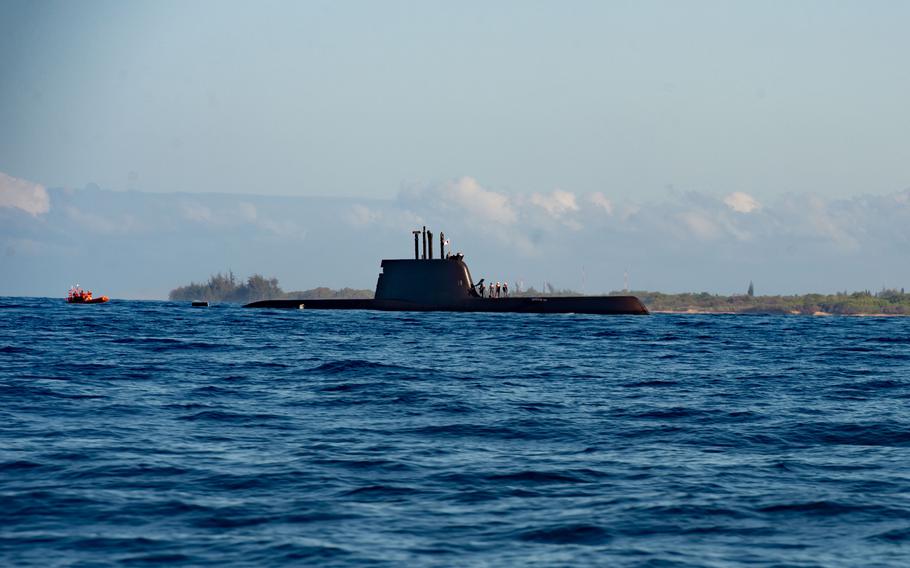
Sailors assigned to Pacific Missile Range Facility Barking Sands in Kauai, Hawaii, conduct a personnel transfer with Republic of Korea Navy submarine Lee Beom-Seok during the Rim of the Pacific exercise on July 17, 2024. (Louis Lea/U.S. Navy)
The Navy is seeking public comment on the impact of a proposed expansion and modernization of vast training areas the service uses in waters off Hawaii and California, including the planned addition of mine warfare ranges.
The areas. which the Navy refers to as the Hawaii-California Training and Testing Study Area, have been used by the service for decades for air, surface and underwater training and testing.
A draft environmental impact statement issued Friday was prepared because the Navy is proposing changes it says are needed to train and test America’s newest weapons and drone systems and defend against those of rivals.
“Adversaries of the United States have and continue to acquire modern, quiet submarines that can pose serious threats to national security, the safety of military forces, and the nation’s economy,” a fact sheet accompanying the environmental study states. “Sonar proficiency is complex and requires regular, hands-on training in realistic and diverse conditions.”
Among the changes proposed in the training areas are:
• A special use airspace in the Southern California range intended to provide real-world maneuver space for manned and unmanned aircraft.
• Upgrades and maintenance to the existing Southern California offshore anti-submarine range with the installation of underwater recording devices called hydrophones and undersea cables.
• Creation of two new shallow-water training ranges as extensions to the offshore anti-submarine range.
• Deployment of seafloor cables and connected instrumentation in Southern California and Hawaii.
• Installation and maintenance of underwater platforms used for underwater vehicle pilot proficiency training in Hawaii and Southern California.
• Installation and maintenance of mine warfare training areas, which would include installation, removal and replacement of non-explosive mine countermeasure targets offshore of Hawaii and Southern California.
Nearshore areas such as Kaneohe Bay and Marine Corps Training Area Bellows on the east side of Oahu are expected to be used “more frequently or for new training or testing activities, such as mine warfare training,” the fact sheet states.
Environmentalists have long criticized the Navy’s use of sonar and explosives at sea because of their deleterious effect on sea mammals and sea turtles.
The environmental impact statement concluded that the modifications and additions to the training areas would have “less than significant” effect on sea creatures, plants and water and air quality.
The proposed uses, however, would cumulatively “contribute incremental effects on the ocean ecosystem, which is already experiencing and absorbing a multitude of stressors to a variety of receptors.” the assessment states.
The assessment details a series of mitigations the Navy would undertake to lessen such cumulative impact. For example, no explosives would be detonated on or near the seafloor within a horizontal distance of 350 yards from artificial reefs, rocky seafloor or shipwrecks.
The Navy is soliciting comments on the assessment through Feb. 11, with a final impact statement expected to be issued in the fall of 2025. The assessment and information about submitting comments are at www.nepa.navy.mil/hctteis/.